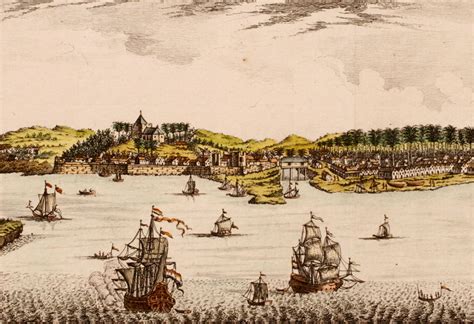A Strategic Location and Its Rise to Prominence
The Sultanate of Malacca, established in 1400, emerged as a significant maritime hub in Southeast Asia due to its strategic location at the southern tip of the Malay Peninsula. The city controlled the Straits of Malacca, a narrow waterway connecting the Indian Ocean and the South China Sea. This strategic position allowed Malacca to become a pivotal trading center, connecting merchants from China, India, Arabia, and beyond.

Population and Demographics
Malacca’s population in the early 15th century was estimated to be around 10,000 people, representing a diverse blend of ethnicities. The city’s indigenous population was of Malay origin, but it also attracted merchants and settlers from various regions. By the end of the 15th century, Malacca’s population had grown to an estimated 30,000, reflecting its thriving trade and economic activity.
Maritime Trade and Economic Power
The Sultanate of Malacca’s economy was primarily driven by maritime trade. The city served as an intermediary in the exchange of goods between different regions. Chinese merchants brought porcelain, silk, and tea, while Indian merchants traded spices, textiles, and precious stones. Arabian merchants primarily imported horses, perfumes, and gold. Malacca acted as a hub for these goods to be redistributed throughout Southeast Asia and beyond.
Economic Statistics
According to estimates, the Sultanate of Malacca generated annual revenues of over 1 million gold dinars in the 15th century. The city’s maritime trade generated significant wealth, which enabled the sultans to invest in infrastructure, military, and diplomacy.
Political Structure and Administration
The Sultanate of Malacca was governed by a monarch known as the Sultan. The Sultan was advised by a council of ministers, which included the Bendahara (Chief Minister), the Temenggung (Admiral), and the Laksamana (Commander of the Fleet). Malacca’s political system was influenced by both Malay and Islamic traditions.
Governing Principles
The Sultanate of Malacca operated on the principles of justice, consultation, and the well-being of its subjects. The Sultan enforced Islamic law (Sharia) and maintained order within the realm.
Cultural Achievements and Intellectual Exchange
The Sultanate of Malacca was not only a center of trade but also a hub for cultural and intellectual exchange. The city attracted scholars, artists, and religious figures from different parts of the world. Malacca played a significant role in the dissemination of Islamic knowledge and culture throughout Southeast Asia.
Literary Contributions
Malacca became a notable center for Malay literature. The Sejarah Melayu (Malay Annals), a historical chronicle, was compiled during this period and provides valuable insights into the history and culture of the Sultanate.
Decline and Legacy
In 1511, the Portuguese, seeking to establish control over the lucrative spice trade, conquered Malacca. The Sultanate’s maritime power declined, and its role as a major trading hub was diminished. However, the legacy of Malacca as a center of cultural and intellectual exchange continued to influence the region.
Conclusion
The Sultanate of Malacca emerged as a significant maritime power in the 15th century, connecting the East and West through its strategic location. Its economic prosperity, political stability, and cultural achievements left a lasting impact on Southeast Asia. Despite its decline, Malacca’s legacy continues to inspire and inform the region’s history and culture.
Additional Context Table 1: Sultanates of Southeast Asia
| Sultanate | Location | Period |
|---|---|---|
| Sultanate of Malacca | Southern Malay Peninsula | 1400-1511 |
| Sultanate of Aceh | Northern Sumatra | 1496-1903 |
| Sultanate of Brunei | Borneo | 14th century-present |
| Sultanate of Sulu | Southern Philippines | 1450-1915 |
| Sultanate of Johor | Southern Malay Peninsula | 1528-1914 |
Comparative Table 2: Major Maritime Powers of the 15th Century
| Power | Location | Period |
|---|---|---|
| Sultanate of Malacca | Southeast Asia | 1400-1511 |
| Ming Dynasty China | East Asia | 1368-1644 |
| Portuguese Empire | Europe | 1415-1999 |
| Swahili City-States | East Africa | 8th-15th centuries |
| Venice | Italy | 8th-18th centuries |
Table 3: Chronology of Malacca’s Economic Development
| Period | Economic Activity |
|---|---|
| 1400-1450 | Establishment of trade network with China, India, and Arabia |
| 1450-1500 | Boom in spice trade, Malacca becomes a major market for pepper |
| 1500-1511 | Height of Malacca’s economic prosperity, revenues exceed 1 million gold dinars |
Table 4: Political and Administrative Structure of the Sultanate of Malacca
| Position | Role |
|---|---|
| Sultan | Head of state and government |
| Bendahara | Chief Minister, responsible for finance and administration |
| Temenggung | Admiral, responsible for naval affairs |
| Laksamana | Commander of the Fleet, responsible for defense |
